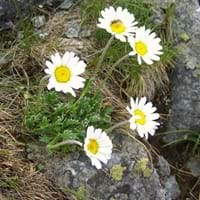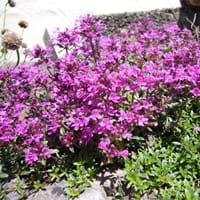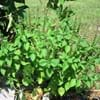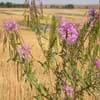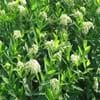Life Span
Perennial
Perennial
Origin
Eastern Europe, Southern Europe, Western Europe, Turkey, Central Asia, Western Asia
Europe, Mediterranean
Types
Not Available
Not Available
Number of Varieties
Not Available
Habitat
Cultivated Beds
Sandy areas, Stony hillsides, Upland soils
USDA Hardiness Zone
Not Available
Not Available
Sunset Zone
2a, 2b, 3a, 3b, 4, 5, 6, 7, 8, 9, 10, 11, 12, 13, 14, 15, 16, 17, 18, 19, 20, 21, 22, 23, 24
A2, A3, 1a, 1b, 2a, 2b, 3a, 3b, 4, 5, 6, 7, 8, 9, 10, 11, 12, 13, 14, 15, 16, 17, 18, 19, 20, 21, 22, 23, 24
Habit
Upright/Erect
Mat-forming
Minimum Height
Not Available
Minimum Width
Not Available
Flower Color
Gold, White, Yellow
Purple, Light Pink
Flower Color Modifier
Bicolor
Bicolor
Fruit Color
Gold, Sandy Brown
Not Available
Leaf Color in Spring
Light Green, Gray Green
Green
Leaf Color in Summer
Light Green, Gray Green
Green
Leaf Color in Fall
Light Green, Gray Green
Green
Leaf Color in Winter
Light Green
Light Green
Plant Season
Summer, Fall
Spring, Summer, Fall, Winter
Sunlight
Full Sun, Partial Sun
Full Sun, Partial Sun
Type of Soil
Clay, Loam, Sand
Sand
The pH of Soil
Acidic, Neutral, Alkaline
Neutral, Alkaline
Soil Drainage
Well drained
Well drained
Bloom Time
Late Summer, Early Fall
Summer
Tolerances
Drought
Drought
Where to Plant?
Ground, Pot
Container, Ground
How to Plant?
Divison, Seedlings
Divison, Seedlings
Plant Maintenance
Medium
Medium
Watering Requirements
Average Water Needs, Do not water from above
Average Water Needs
In Summer
Lots of watering
Lots of watering
In Spring
Moderate
Moderate
In Winter
Average Water
Average Water
Soil pH
Acidic, Neutral, Alkaline
Neutral, Alkaline
Soil Type
Clay, Loam, Sand
Sand
Soil Drainage Capacity
Well drained
Well drained
Sun Exposure
Full Sun, Partial Sun
Full Sun, Partial Sun
Pruning
Remove damaged leaves, Remove dead branches, Remove dead leaves
Remove damaged leaves, Remove dead branches, Remove dead leaves
Fertilizers
All-Purpose Liquid Fertilizer
All-Purpose Liquid Fertilizer
Pests and Diseases
Aphids
Not Available
Plant Tolerance
Drought
Drought
Flower Petal Number
Single
Single
Fragrant Bark/Stem
Yes
Yes
Foliage Texture
Medium
Fine
Foliage Sheen
Matte
Matte
Allergy
no allergic reactions
Skin irritation
Aesthetic Uses
Borders
Showy Purposes, Used for decorating walls, fences, gates, hedges, etc.
Beauty Benefits
Not Available
Not Available
Environmental Uses
Air purification
Air purification
Medicinal Uses
Antiseptic, Astringent, Digestive, Laxative
Folklore
Part of Plant Used
extracted oil, Leaves
Flowers, Leaves
Other Uses
For making oil
Decoration Purposes, useful as a ground cover
Used As Indoor Plant
No
No
Used As Outdoor Plant
Yes
Yes
Garden Design
Edging, Edible, Herb / Vegetable, Mixed Border, Rock Garden / Wall, Wildflower
Edging, Edible, Groundcover, Herb / Vegetable, Lawns and Turf, Mixed Border, Rock Garden / Wall
Botanical Name
TANACETUM balsamita
THYMUS serpyllum
Common Name
Beaver Tongue, Costmary, Lady's Herb, Painted Daisy
Creeping Thyme, Breckland thyme, Breckland-garden, Mother-of-thyme, Wild thyme
In Hindi
Painted Daisy
Creeping Thyme
In German
gemalt Gänseblümchen
Feldthymian, Quendel
In French
painted daisy
Serpolet, Thym sauvage
In Spanish
margarita pintada
Serpol, Tomillo
In Greek
ζωγραφισμένα μαργαρίτα
Creeping Thyme
In Portuguese
margarida pintada
Tomilho
In Polish
malowane stokrotka
Creeping Thyme
In Latin
picta primula
Creeping Thyme
Phylum
Tracheophyta
Magnoliophyta
Class
Magnoliopsida
Magnoliopsida
Family
Asteraceae
Lamiaceae
Clade
Angiosperms, Asterids, Eudicots
Angiosperms, Asterids, Eudicots
Tribe
Not Available
Mentheae
Subfamily
Not Available
Nepetoideae
Number of Species
Not Available
Importance of Painted Daisy and Creeping Thyme
Want to have the most appropriate plant for your garden? You might want to know the importance of Painted Daisy and Creeping Thyme. Basically, these two plants vary in many aspects. Compare Painted Daisy and Creeping Thyme as they differ in many characteristics such as their life, care, benefits, facts, etc. Every gardener must at least have the slightest clue about the plants he wants to plant in his garden. Compare their benefits, which differ in many ways like facts and uses. The medicinal use of Painted Daisy is Antiseptic, Astringent, Digestive and Laxative whereas of Creeping Thyme is Folklore. Painted Daisy has beauty benefits as follows: Not Available while Creeping Thyme has beauty benefits as follows: Not Available.
Compare Facts of Painted Daisy vs Creeping Thyme
How to choose the best garden plant for your garden depending upon its facts? Here garden plant comparison will help you to solve this query. Compare the facts of Painted Daisy vs Creeping Thyme and know which one to choose. As garden plants have benefits and other uses, allergy is also a major drawback of plants for some people. Allergic reactions of Painted Daisy are no allergic reactions whereas of Creeping Thyme have Skin irritation respectively. Having a fruit bearing plant in your garden can be a plus point of your garden. Painted Daisy has no showy fruits and Creeping Thyme has no showy fruits. Also Painted Daisy is not flowering and Creeping Thyme is not flowering . You can compare Painted Daisy and Creeping Thyme facts and facts of other plants too.
